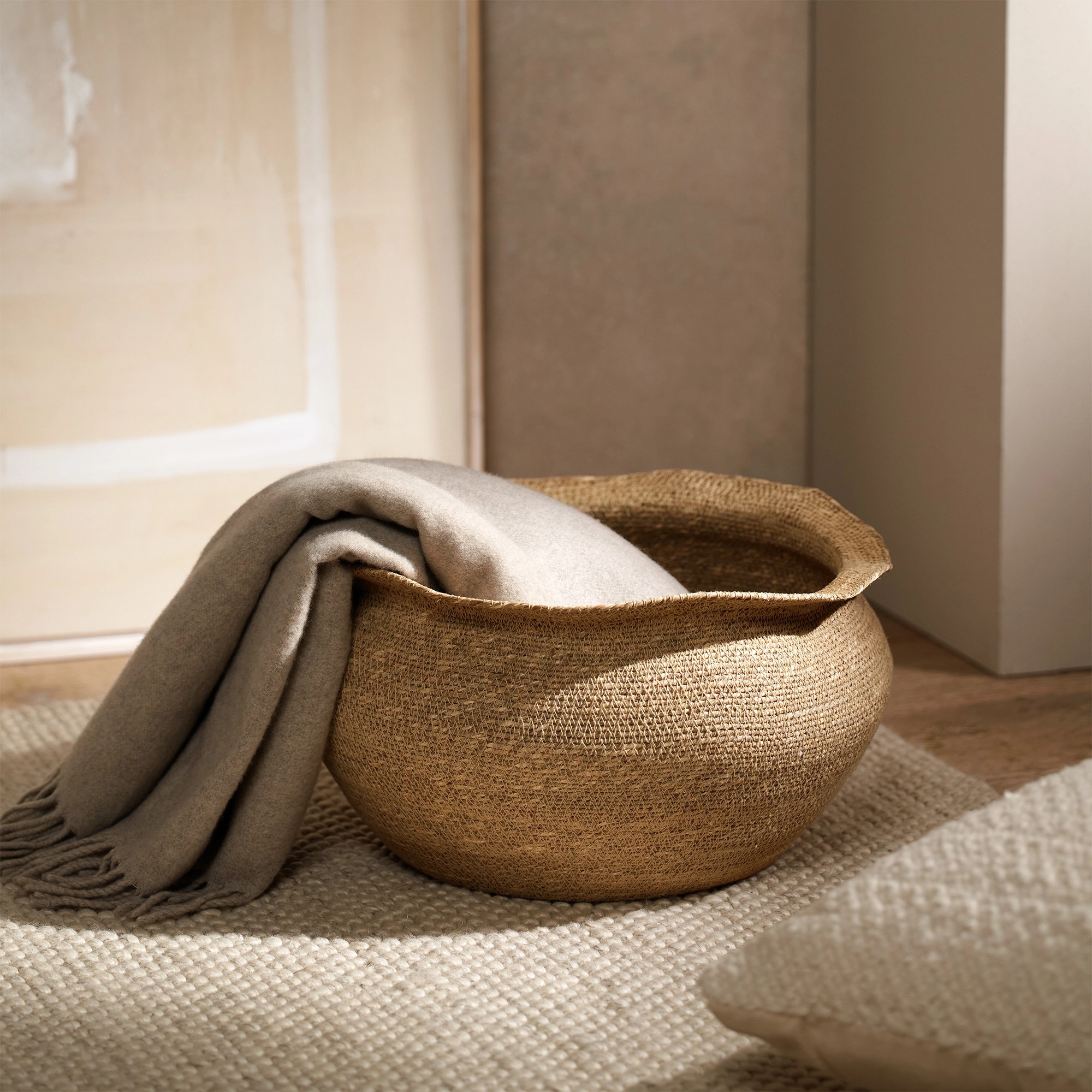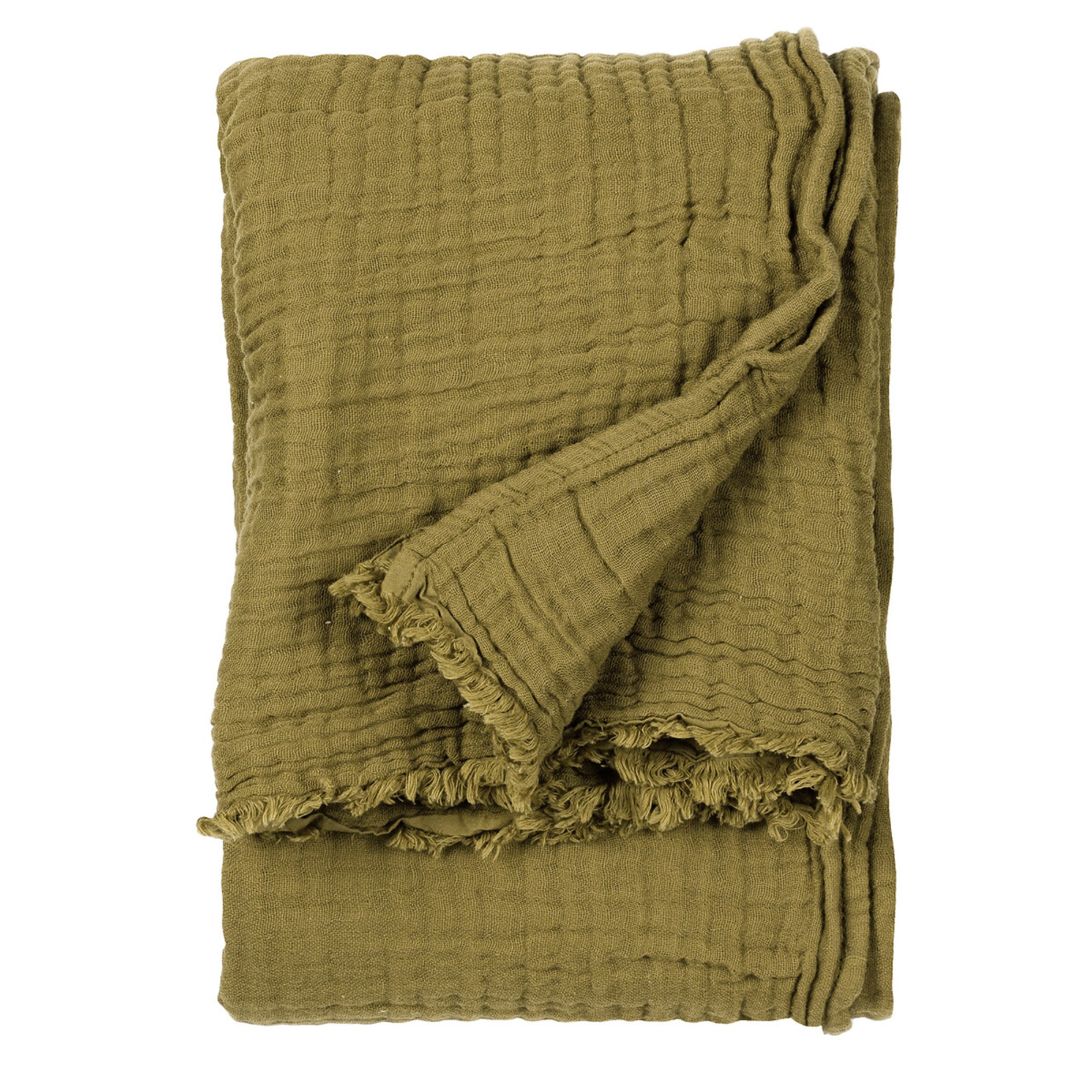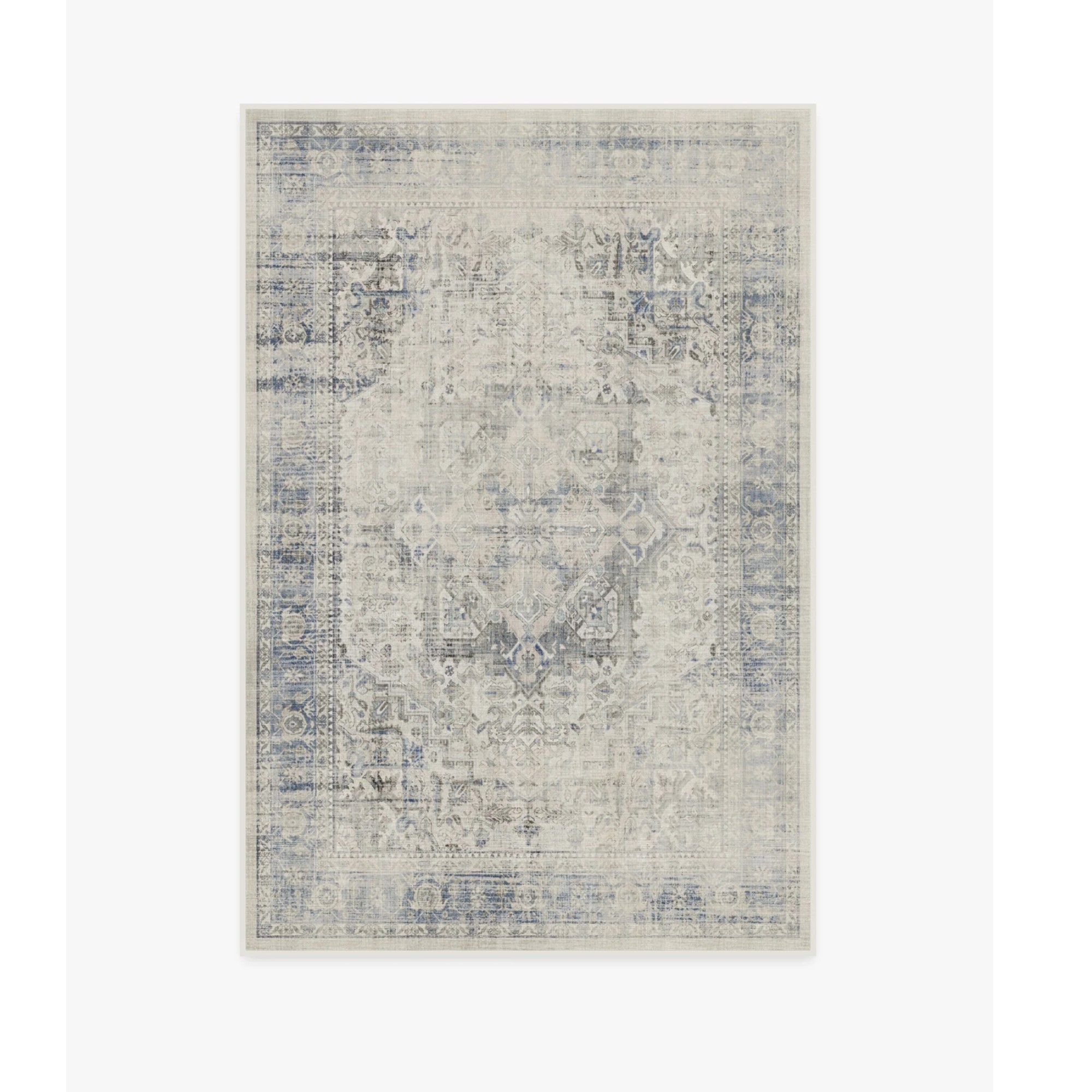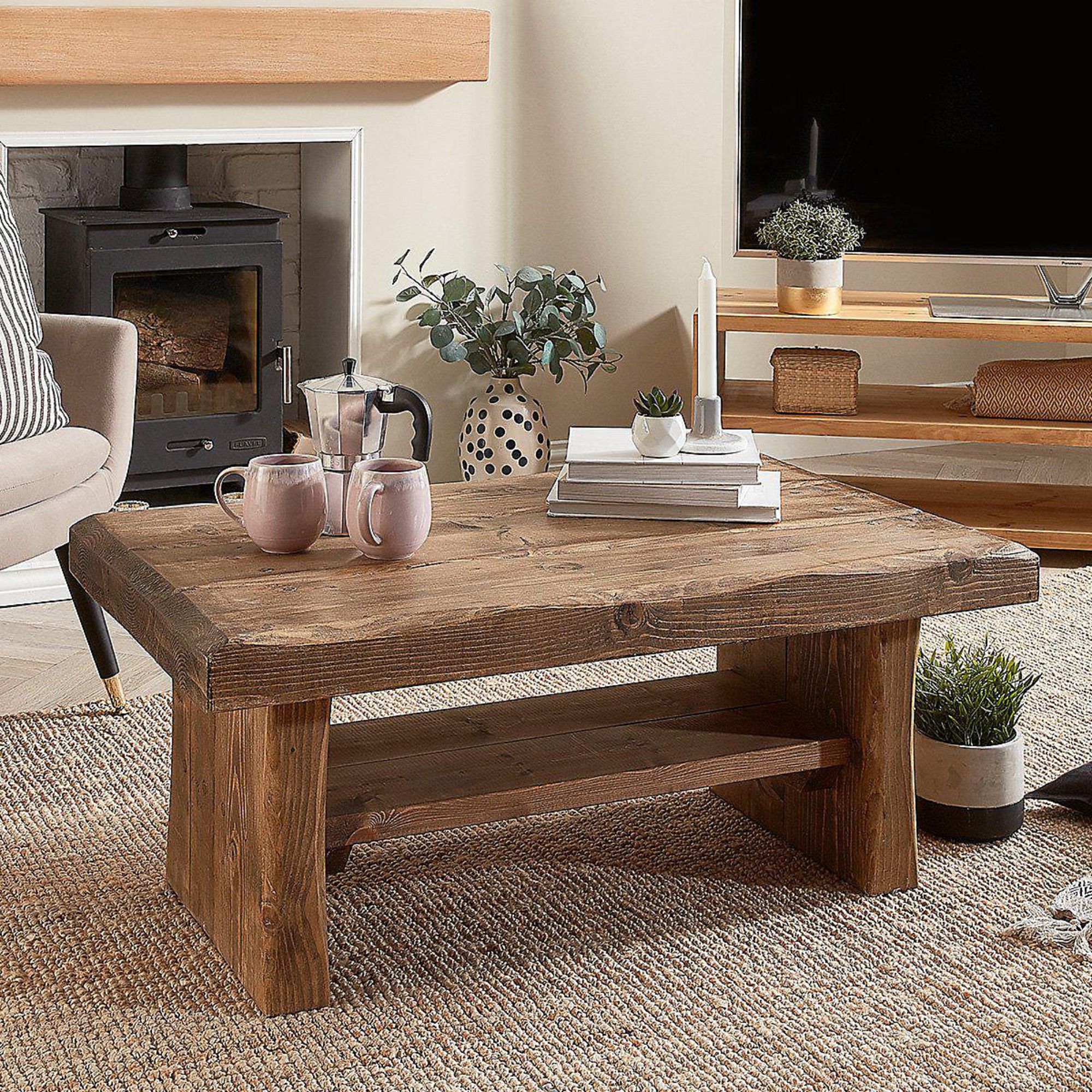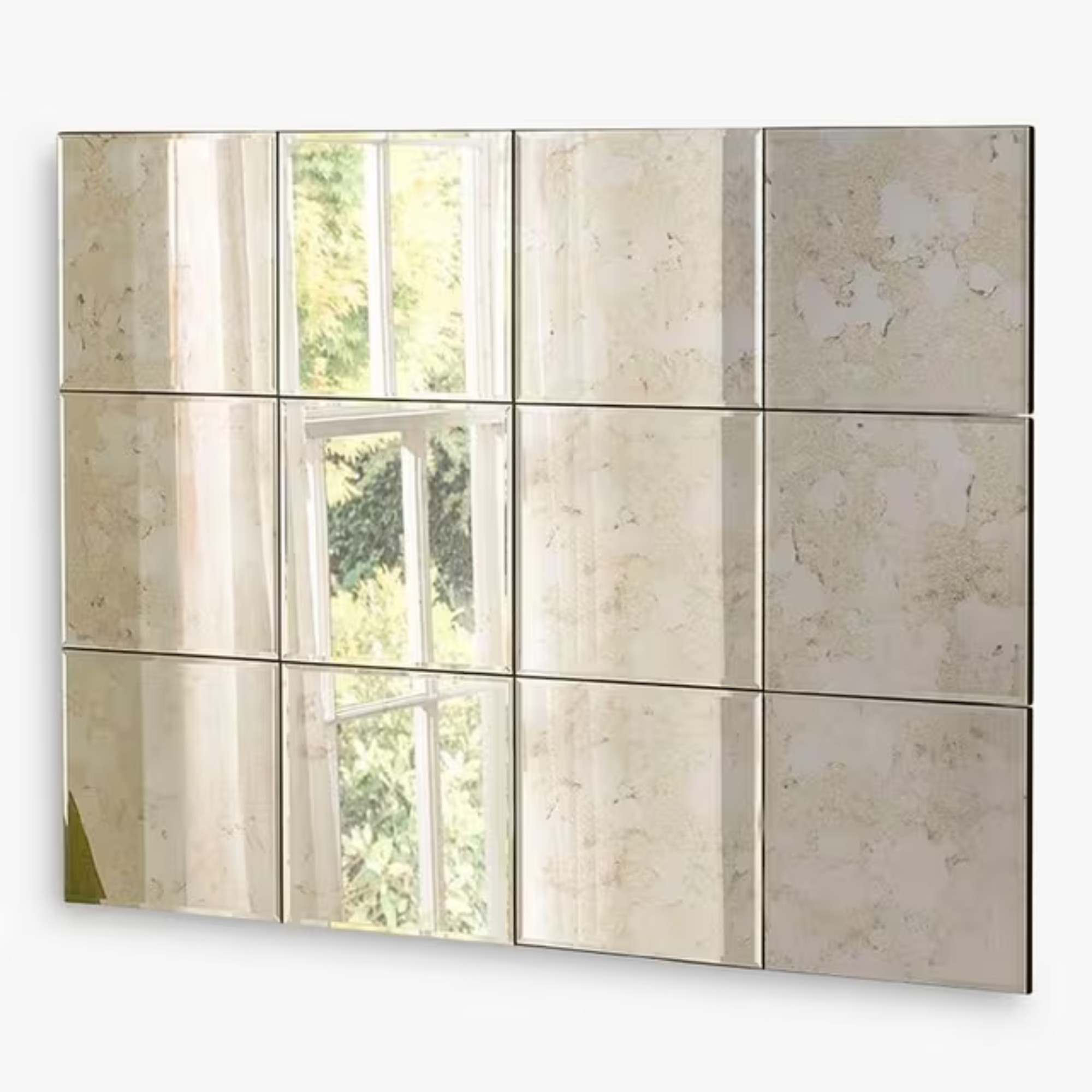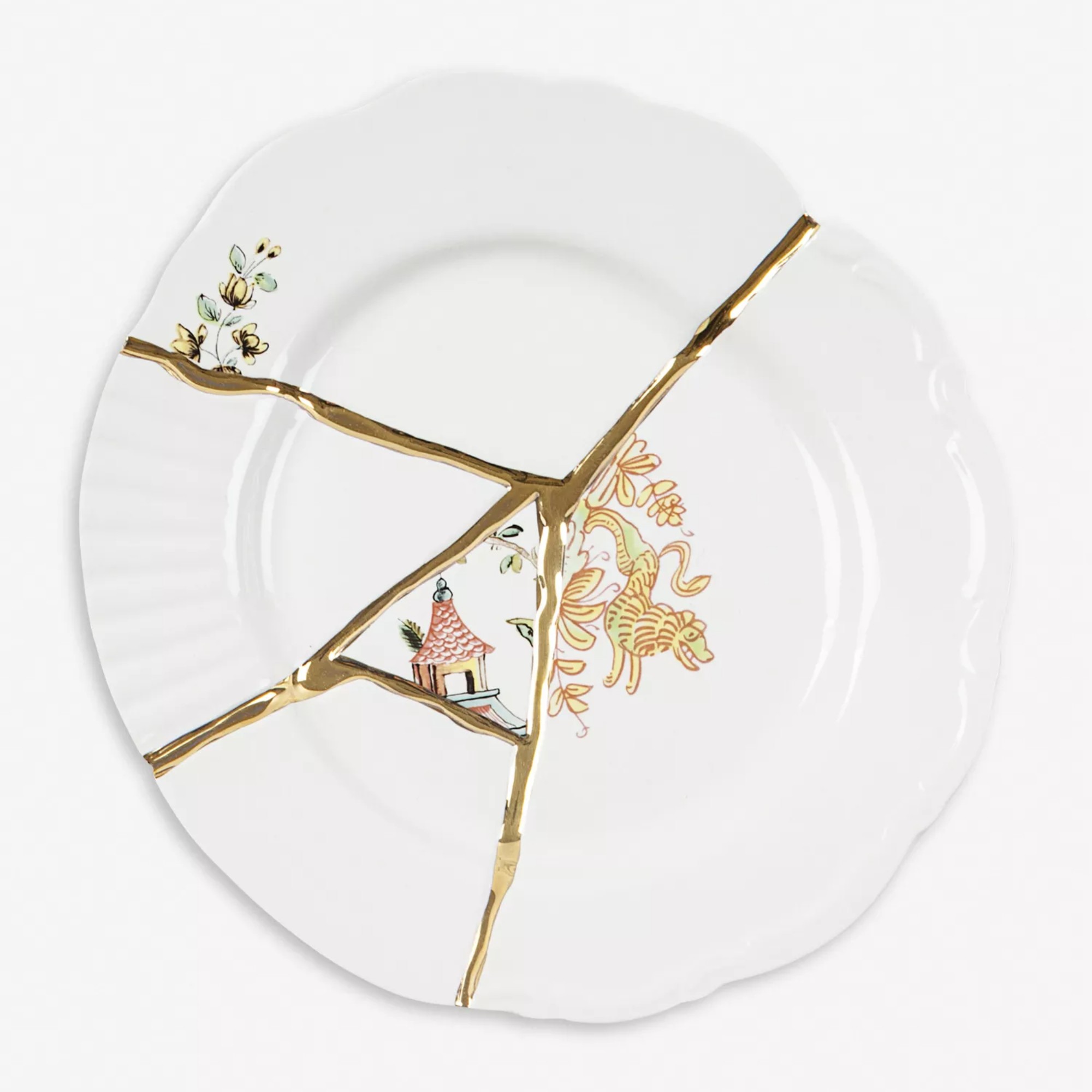6 wabi-sabi living room ideas – create a perfectly imperfect lounge with this Japanese philosophy
This is how to incorporate the principles of this trending Japanese philosophy into your lounge for a harmonious look and feel
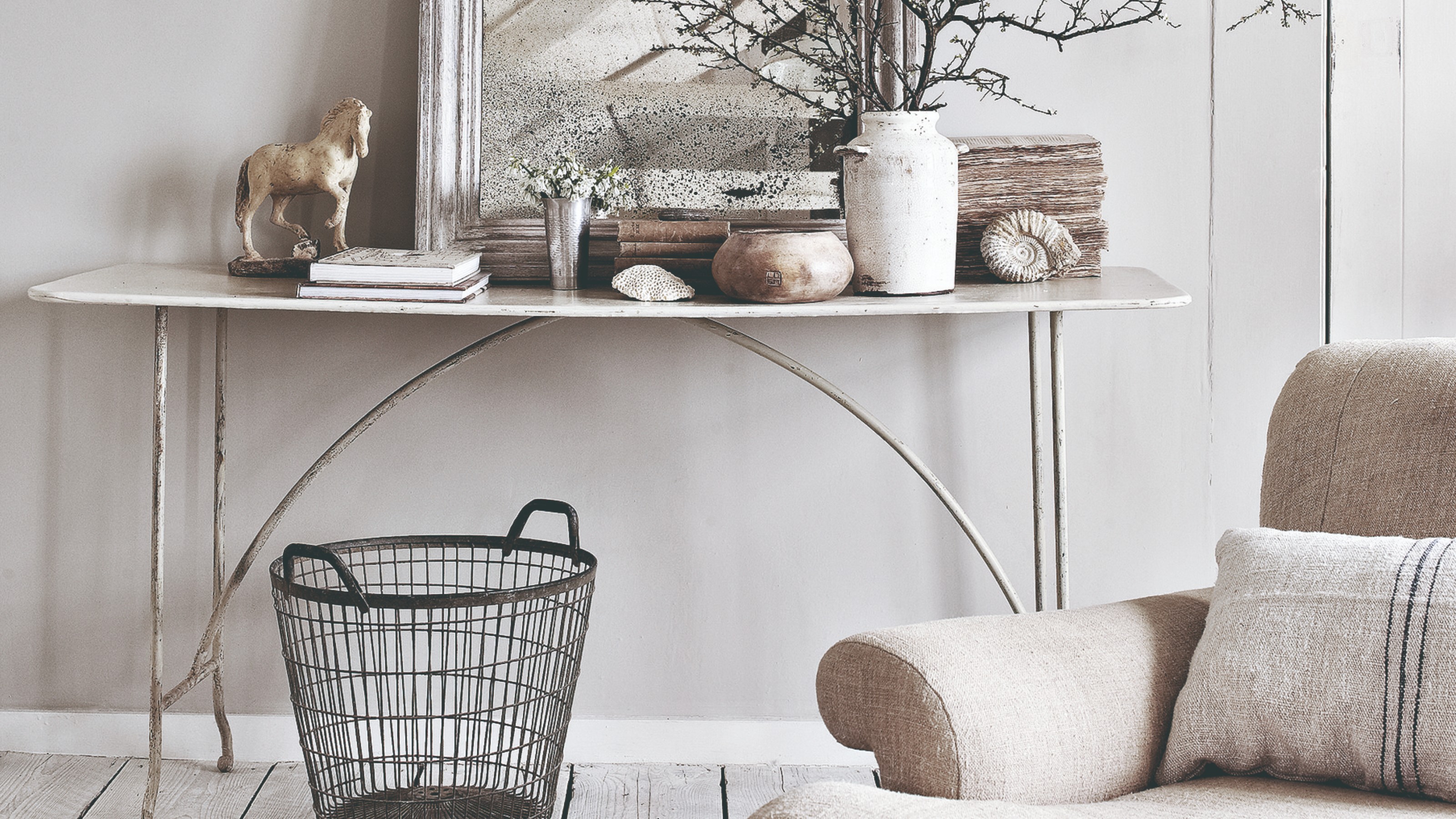

Keeping your home looking tidy, spotless and like overall perfection can feel tedious – and can even have a detrimental effect on how we feel in our home, especially in the living room, which is often the entertaining centrepoint. But the good news is, that’s exactly what the Japanese philosophy of wabi-sabi is combatting. And with the help of our wabi-sabi living room ideas, so can you.
Wabi-sabi is the second most popular and searched interior design and living room trend, right after cottagecore, according to a report by Hillarys. The report outlines that Google searches for wabi-sabi surpassed 3.6 million in the past year, which is 12% higher than last year, while over 2 million Instagram posts were dedicated to wabi-sabi interiors this year.
But what is the wabi-sabi interiors trend and why is it so popular right now? ‘Wabi-sabi is a Japanese philosophy that celebrates imperfection, transience, and the beauty of the natural world,’ says Daniel Ufland, Flitch co-founder. ‘In interiors, it’s about embracing simplicity and authenticity, creating spaces that feel warm, lived-in, and unpretentious. Consider it as finding charm in the cracks and wear of everyday life rather than striving for perfection.’
Victoria Foster, interior stylist at ScS, continues, ‘We’ve seen a growing interest in the natural world in every aspect of interior design this year, with other outdoors-inspired trends like biophilic design, bohemian decor and even European destination-led trends with the likes of Amalfi-core. In a fast-paced, perfection-driven world, people crave spaces that feel authentic, calming, and grounded. Wabi-sabi aligns with the broader trend toward sustainability, mindfulness, and intentional living, making it especially relevant today.’
And since this is both a home decor trend that’s expected to be big in 2025 and it’s a philosophy that promotes wellness, I think we have every reason to see how to embrace this concept in our living rooms – this is how to go about it.
Get the wabi-sabi look
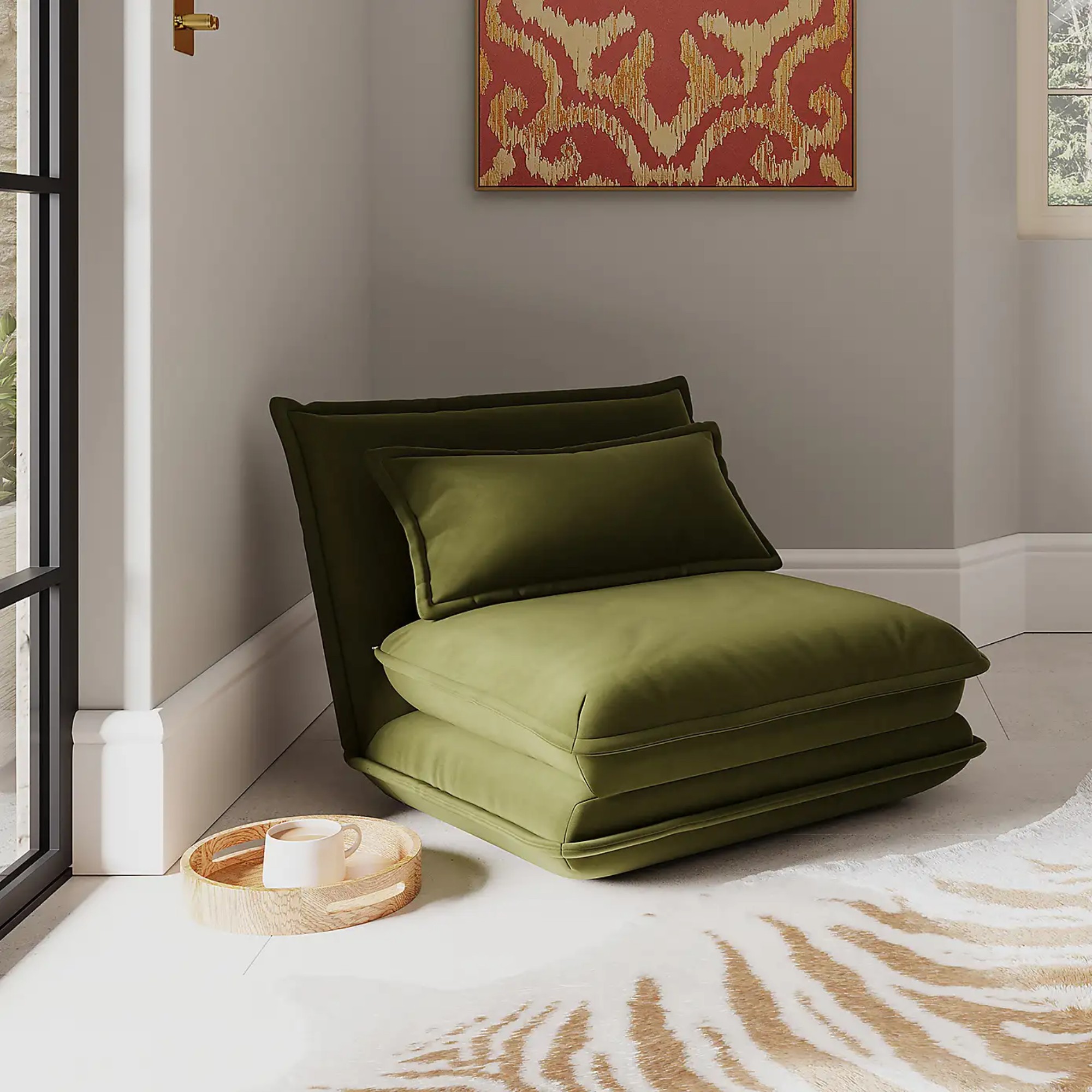
Not only does it boast a simple, low and minimalist design, this Dunelm buy is also practical, doubling as one of the best sofa beds from the brand.

If you're ever in doubt where to get a wabi-sabi-style piece, go straight to Nkuku. This brand's ethos is built on wabi-sabi principles, in addition to sustainability and ethical production. This decorative bowl made with imperfect, reclaimed wood is a brilliant example.
1. Declutter your lounge
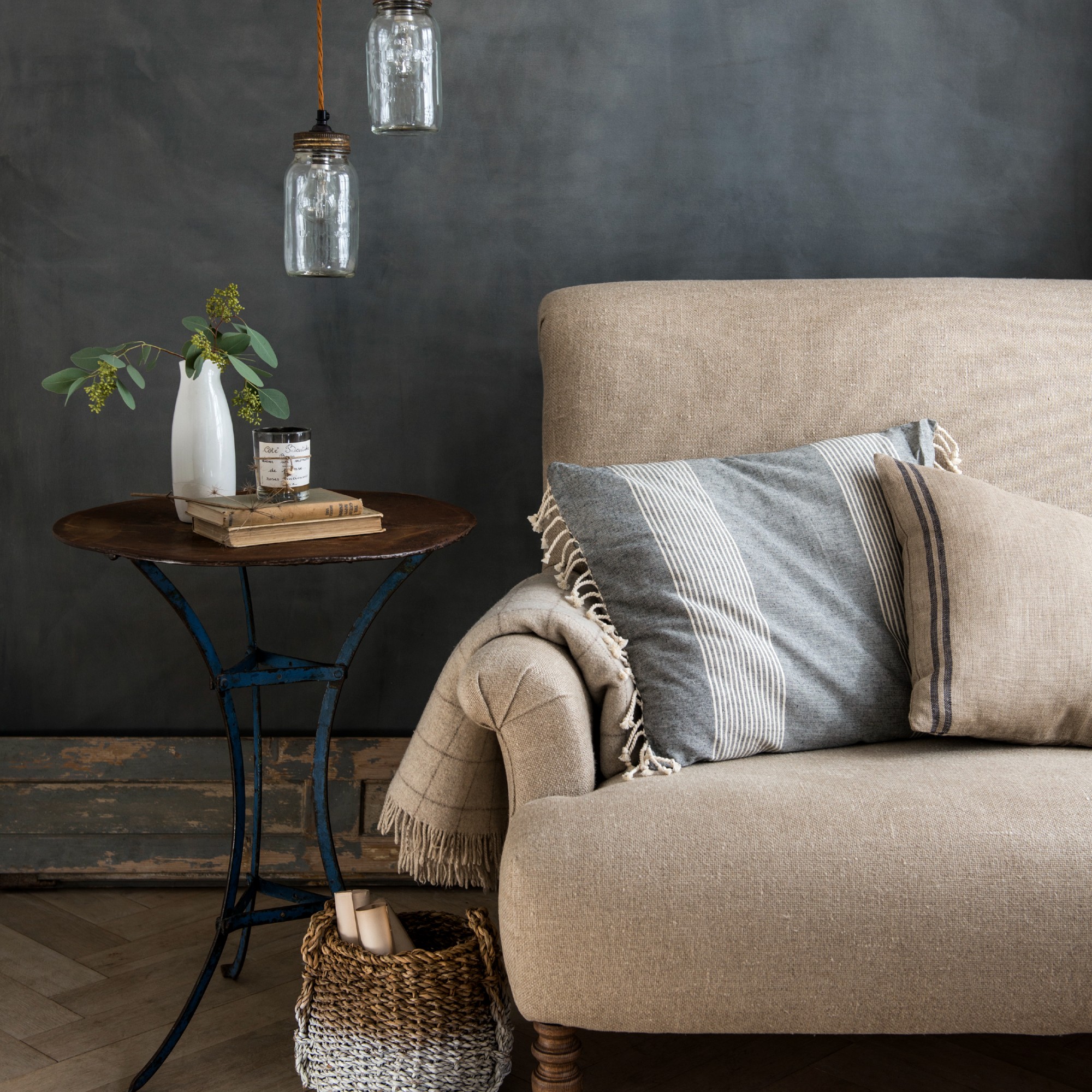
Before you start adding anything wabi-sabi-like into your scheme, begin by decluttering your living room and getting rid of everything that doesn’t have a reason to be there.
‘Decluttering is a great place to start practicing wabi-sabi at home – prioritise quality over quantity and keep only items that have purpose or personal meaning,’ says Lucy Mather, interiors expert at Arighi Bianchi. ‘The goal is a space that feels serene and purposeful, free from excess clutter and where every object is carefully curated for its utility or beauty.’
Sign up to our newsletter for style inspiration, real homes, project and garden advice and shopping know-how
Victoria at ScS adds, ‘For a home to embody wabi-sabi promoting mindfulness and relaxation is key. A cluttered room inhibits the mind from switching off and can create distraction – in these settings, we can become preoccupied with the need to tidy and clean. Instead, make sure surfaces and walls are minimally styled.’
2. Make decor intentional and minimal

After you’re done decluttering, you should be left only with minimal and meaningful decor.
‘Avoid over-decorating – less is definitely more. Decor is minimal, but intentional. The goal is to create a space that feels authentic and restorative, not overly curated,’ Daniel at Flitch says.
Lucy at Arighi Bianchi agrees, ‘Minimalist design principles ensure that every item is chosen with intention, allowing the subtle interplay of colours and materials to shine through. This approach transforms the home into a serene and understated sanctuary, where imperfections and simplicity evoke a sense of effortless beauty and harmony.’
3. Celebrate the imperfect and weathered
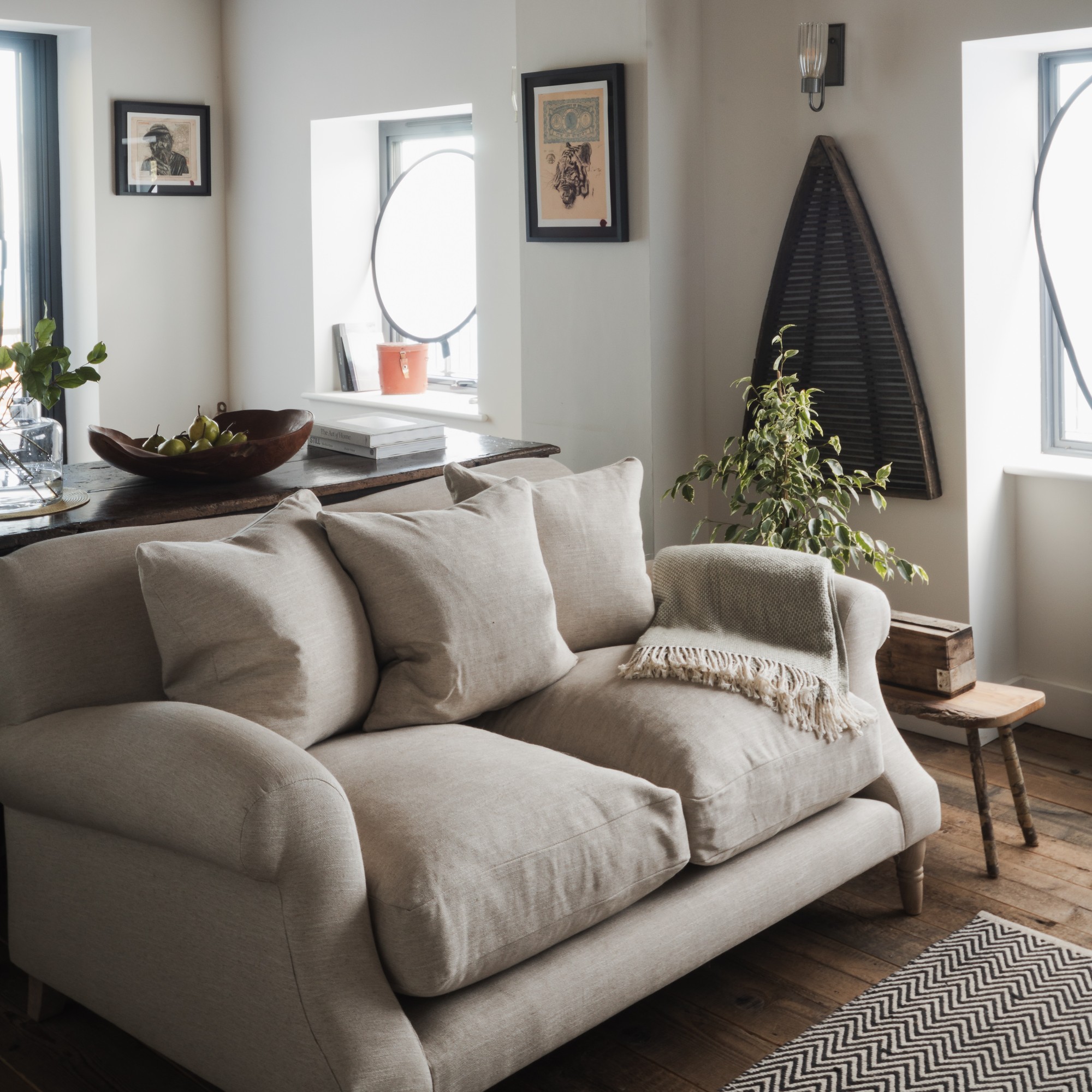
The idea of accepting and even celebrating imperfection and finding beauty in it is central to wabi-sabi. So whether it’s cracks in displayed pottery, a weathered wooden coffee table or a naturally wrinkled linen throw, there are many ways to incorporate and/or embrace imperfection in your living room.
‘Highlight imperfections, like a cracked ceramic vase or a weathered piece of furniture. Opt for mismatched furniture,’ Daniel suggests.
Lucy continues, ‘Imperfection is key, so embrace handmade, asymmetrical, or weathered pieces that carry a sense of history. Turn flaws into features by displaying a cracked ceramic bowl repaired with gold kintsugi or a slightly asymmetrical handwoven basket for a uniquely eclectic and deeply personal sanctuary.’
4. Opt for a muted, earthy colour palette

The perfect wabi-sabi living room colour scheme consists of natural, earthy shades, which are incidentally also some of the biggest paint trends for 2025.
‘Earthy, muted colours like soft greys, warm browns, moss greens, and clay tones are ideal for wabi-sabi interiors. These shades echo the natural world and create a soothing, grounded atmosphere. They allow textures and materials to take centre stage, enhancing the sense of organic simplicity,’ Daniel says.
Victoria at ScS adds, ‘Keep colours to a refined palette of complementary shades and materials. In the same way that cluttered surfaces can overwhelm the brain, so can too many clashing patterns and colours. A good way to achieve this form of minimalism is by having a dominant neutral colour paired with accents of soft earthy tones and wood. For example, keep the walls and your sofa in a light shade such as cream or oatmeal, then dress the sofa with brown or green soft furnishings. Incorporate terracotta vases and wooden bowls in different corners of the room to add further interest.’
5. Incorporate natural materials
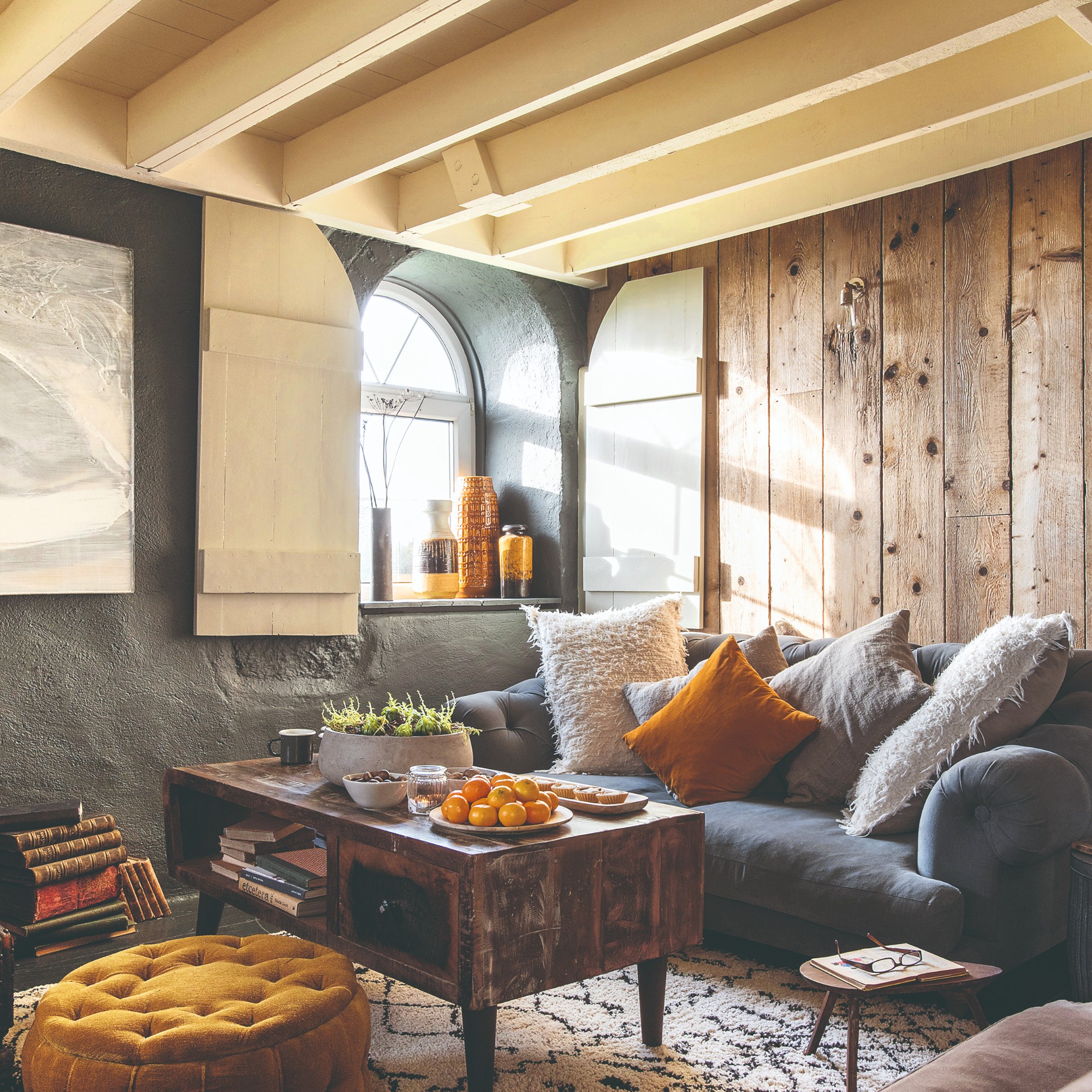
Wabi-sabi is rooted in the natural world – therefore, wabi-sabi interiors are built on incorporating natural materials throughout. Especially those with organic, textured feel and imperfect finish.
‘Natural materials like wood, stone, and linen all age gracefully and offer a sense of organic charm. Weathered wood furniture, linen curtains, or stone accents seamlessly blend into the palette, emphasising organic textures. Accessories like terracotta pots, wool rugs, or ceramic vases in earthy shades add warmth and character without overwhelming the space. Celebrate irregularities like the knots in wood or the uneven texture of handmade pottery,’ Lucy at Arighi Bianchi says.
6. Focus on layering textures

Queen of interiors Kelly Hoppen has said that texture is the most important element in a room. And layering various textures is also what makes for an inviting, cosy and harmonious lounge.
Lucy at Arighi Bianchi suggests creating ‘a cosy living room with a low-seating arrangement, layered wool throws, and natural fibre sisal or rattan rugs. Opt for soft, natural lighting to enhance the texture and warmth of the materials.’
So while the wabi-sabi colour palette is not necessarily all that varied, you’ll be creating plenty of dimension and intrigue by layering cushions, throws and rugs on top of and underneath your best sofa.
FAQs
What are the principles of wabi-sabi?
Some literature suggests there are three principles, while others say five or even seven, so it's safe to say that the principles of wabi-sabi could depend on who you ask.
‘The principles of wabi-sabi vary depending on interpretation, but they generally include simplicity, naturalness, imperfection, and impermanence,’ Daniel Ufland at Flitch explains. ‘Some frameworks suggest three core ideas: harmony, humility, and acceptance. Others expand to five or seven, incorporating elements like authenticity and a connection to nature. Ultimately, it’s less about rigid rules and more about a mindset of embracing what feels real and meaningful.’
What is the difference between wabi-sabi and Japandi?
While there are similarities between wabi-sabi and Japandi interiors, there are also stark differences.
‘While both focus on minimalism and natural materials, wabi-sabi emphasises imperfection and raw authenticity, whereas Japandi combines Japanese and Scandinavian influences, focusing on clean lines, functionality, and refined minimalism,’ says Victoria Foster at ScS.
As far as interior trends go, I’d say this is one of the better ones – embracing realness over pretentiousness. I’m definitely here for more of that!

Sara Hesikova has been a Content Editor at Ideal Home since June 2024, starting at the title as a News Writer in July 2023. She is now also the Ideal Home Certified Expert in Training on Furniture, and so far has tested over 150 different sofas.
Graduating from London College of Fashion with a bachelor’s degree in fashion journalism in 2016, she got her start in niche fashion and lifestyle magazines like Glass and Alvar as a writer and editor before making the leap into interiors, working with the likes of 91 Magazine and copywriting for luxury bed linen brand Yves Delorme among others.
